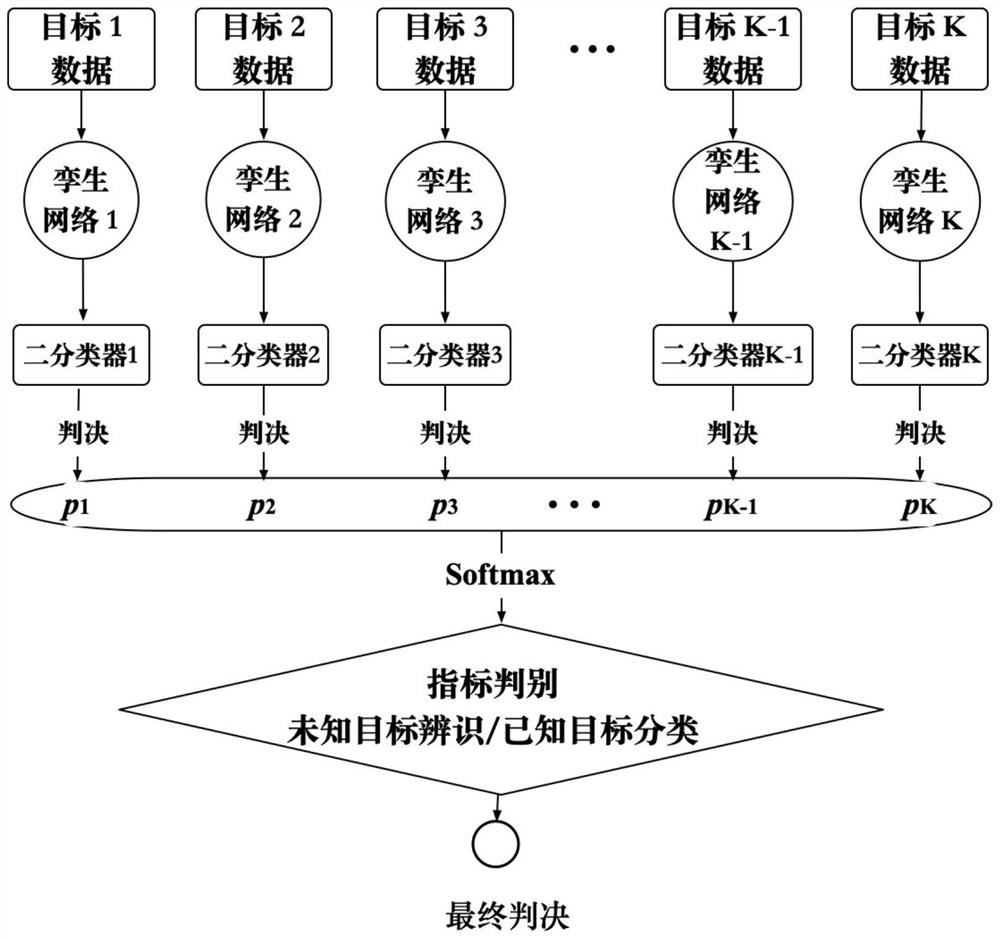An intelligent radiation source identification method based on combined twin network
A twin network and recognition method technology, applied in the field of signal processing, can solve the problems of unknown target recognition and re-entry recognition, and achieve the effect of improving recognition accuracy
- Summary
- Abstract
- Description
- Claims
- Application Information
AI Technical Summary
Problems solved by technology
Method used
Image
Examples
Embodiment 1
[0042] like figure 1 As shown, an intelligent radiation source identification method based on a combined twin network includes the following steps:
[0043] S1. Collect several samples and use the twin network for data enhancement;
[0044] S2. According to the enhanced data, the trained combined twin network is used to identify the unknown target;
[0045] S3, calibrate the unknown target, and update the combined twin network according to the calibrated unknown target;
[0046] S4, using the updated combined Siamese network to re-enter the unknown target.
[0047] The step S1 is specifically:
[0048] S1.1. Collect K-type radiation source samples, the number of each type of samples is n k , obtain the training sample pairs of a single Siamese network, the number of which is
[0049] S1.2. Through sample combination, the number of training samples of a single Siamese network is expanded to k*n k of (k*n k -1) / 2 times, complete data enhancement.
[0050] The step S2 i...
Embodiment 2
[0072] This embodiment provides an intelligent radiation source identification method based on a combined twin network.
[0073] Step 1: Use the Siamese network for data augmentation.
[0074] The input of the Siamese network is a pair of samples. The network identifies whether the sample pair is the same class by learning the similarity and difference of the sample pair. If the two input samples are of the same class, the network output is 1; otherwise, the input is 0. For k classification problems, the number of samples in each class is n k Under the condition of , through sample combination, the number of training samples of a single Siamese network is The number of samples is expanded to the original (k*n k -1) / 2 times for data augmentation.
[0075] Step 2: Under the condition of small samples, use the trained combined Siamese network to identify the unknown target.
[0076] On the basis of Step 1, use the Siamese network to train a binary classification network for ...
PUM
 Login to View More
Login to View More Abstract
Description
Claims
Application Information
 Login to View More
Login to View More - R&D
- Intellectual Property
- Life Sciences
- Materials
- Tech Scout
- Unparalleled Data Quality
- Higher Quality Content
- 60% Fewer Hallucinations
Browse by: Latest US Patents, China's latest patents, Technical Efficacy Thesaurus, Application Domain, Technology Topic, Popular Technical Reports.
© 2025 PatSnap. All rights reserved.Legal|Privacy policy|Modern Slavery Act Transparency Statement|Sitemap|About US| Contact US: help@patsnap.com



